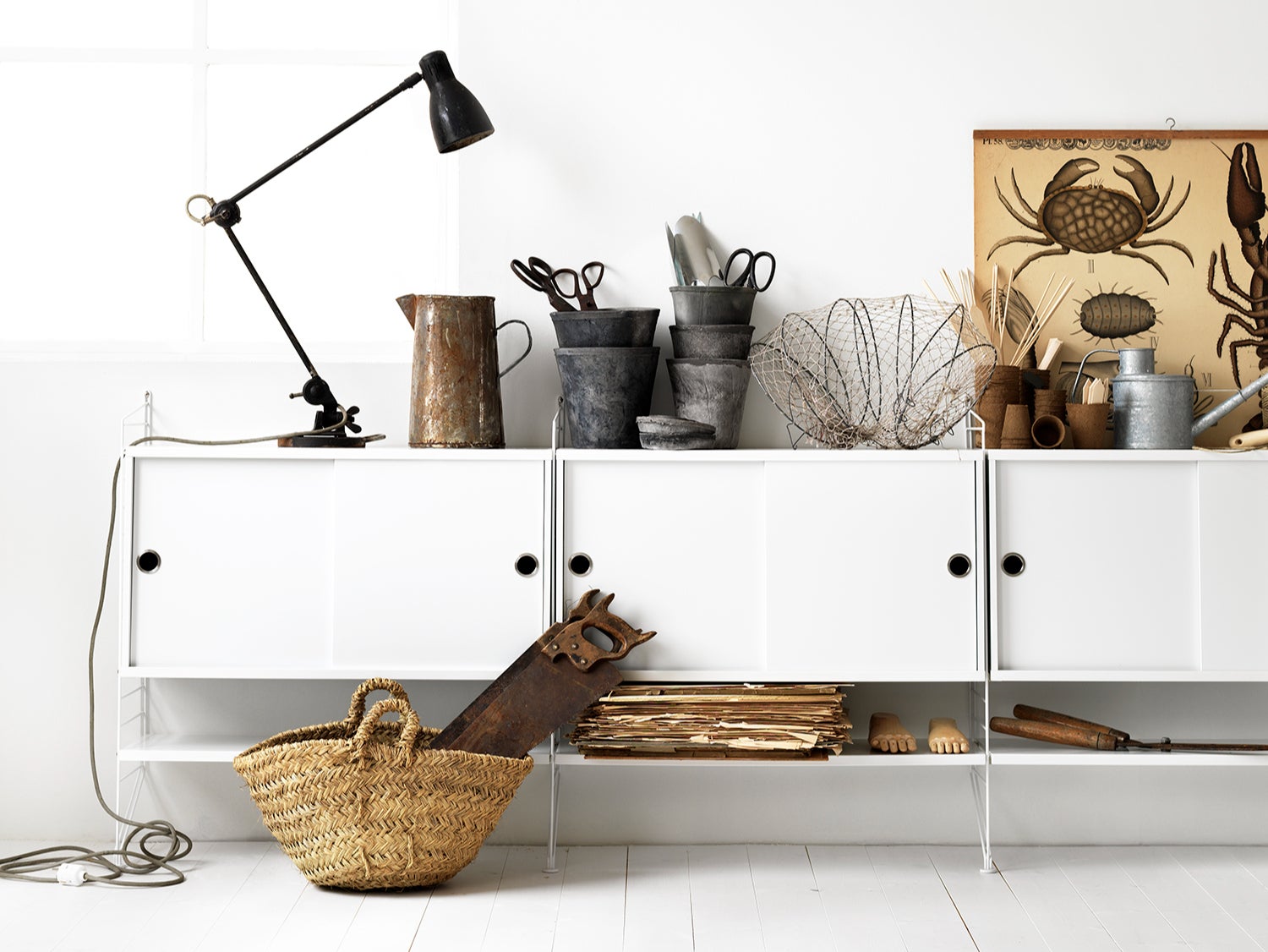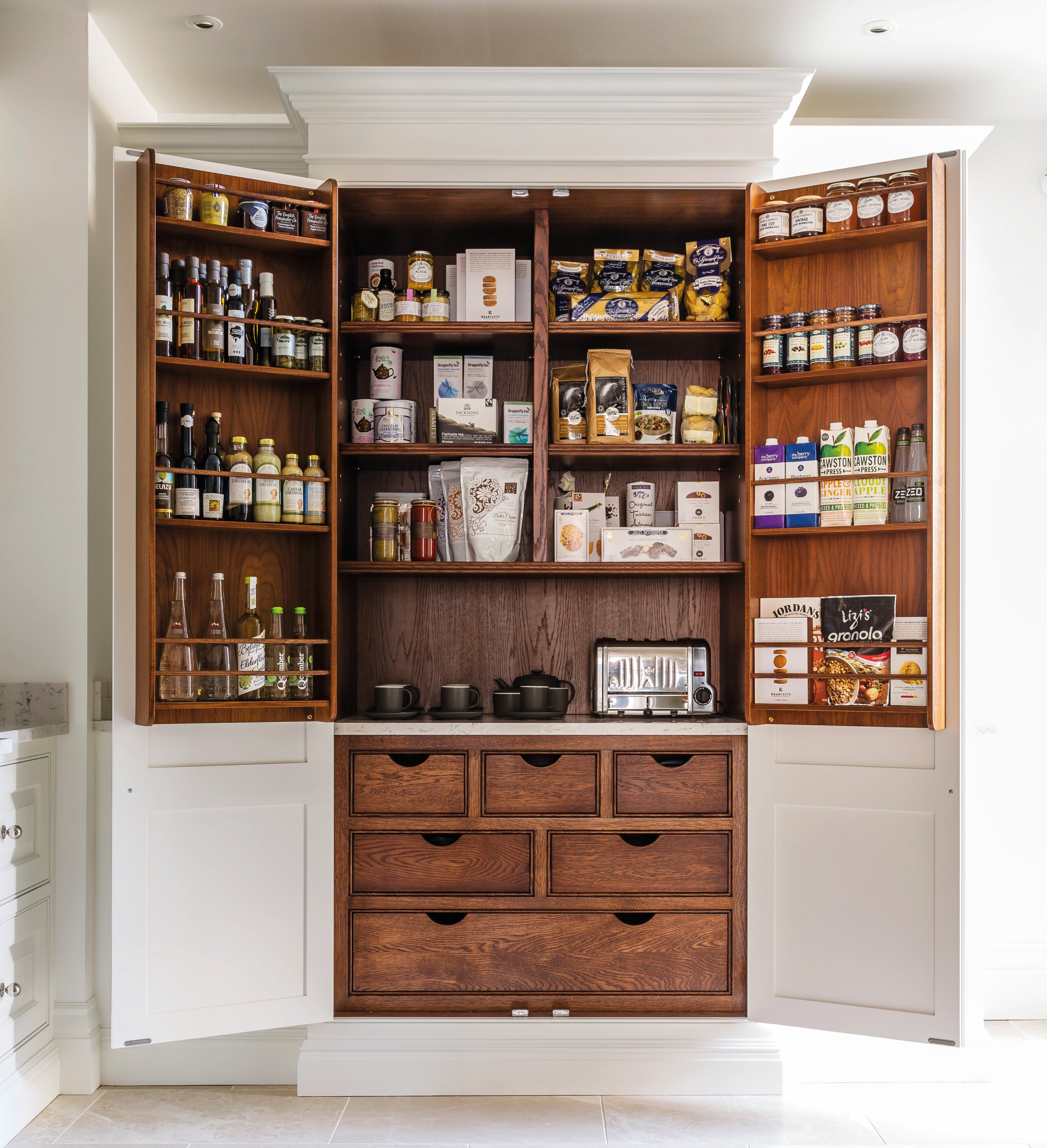Stylish storage for your most organised year yet
Anya Cooklin-Lofting spoke to designers and makers about their organisation tips around the home, from the kitchen pantry to stairwells and nooks

Your support helps us to tell the story
From reproductive rights to climate change to Big Tech, The Independent is on the ground when the story is developing. Whether it's investigating the financials of Elon Musk's pro-Trump PAC or producing our latest documentary, 'The A Word', which shines a light on the American women fighting for reproductive rights, we know how important it is to parse out the facts from the messaging.
At such a critical moment in US history, we need reporters on the ground. Your donation allows us to keep sending journalists to speak to both sides of the story.
The Independent is trusted by Americans across the entire political spectrum. And unlike many other quality news outlets, we choose not to lock Americans out of our reporting and analysis with paywalls. We believe quality journalism should be available to everyone, paid for by those who can afford it.
Your support makes all the difference.The maelstrom of posts on social media concerning the state of the nation’s pantries, utility rooms and chests of drawers this week has been far more blizzardly than years previous. Carried on the affecting winds of our collective urge to reorganise are whispers of nifty spice racks or label makers, self-deprecating boasts of use-by dates pre-dating the pandemic and squeals of delight at the rediscovery of long-lost napkin rings.
This week, I spoke to designers and makers about their organisation tips around the home, from the kitchen pantry to stairwells and nooks, in an attempt to get to the real core of what makes us tick when it comes to a well-organised home. It turns out, the very best organisation techniques prioritise functionality and aesthetics, providing access to the essentials and displaying your most treasured items.
Peter Erlandsson, Co-Owner of String
“It’s important to celebrate individual journeys, and I believe we should all take pride in the objects we have collected throughout our lives. Whether it’s a collection of specific objects like crockery or crystal ware, or just sentimental bits and pieces, give your clutter a new lease of life. Every ornament, shell, fridge magnet and dog-eared book can make up a mosaic of colourful references to your life. Organisation, in the traditional sense, shouldn’t detract from this.
“Styling these objects on a simple shelf can be beautiful and decorative. Treat your shelf like a canvas, and create a work of art on top of it with artfully styled ‘clutter’. Not only is it fun to create your own, organic and changing artwork from your own nick-nacks, but it is a great way to save space. When you lift things off the floor and use shelving as a storage solution, you create the illusion of a larger space. The general rule when choosing furniture for a room you would like to extend is to use slim-line design silhouettes which provide an overall lighter aesthetic. String shelving does exactly this – not distracting from the flow of the room, but making a subtle design statement at the same time.”

Tom Howley, Design Director of Tom Howley
“Effective storage is, of course, the primary function of the ever-popular kitchen pantry. This comes down to not only the internal working of the cabinet but also where to incorporate it into a kitchen design. Where possible it’s always useful to keep the pantry adjacent to your fridge, meaning that your food storage is all zoned in one area and it also looks neat. With a bespoke kitchen designer, you will be able to design floor to ceiling units that give maximum storage as well as being able to tailor the internal components to your storage needs. For me, the most memorable parts of the most fabulous kitchens are double pantries, laden with interesting bottles of infused oils, rustling packets of the finest truffles, artisanal jarred vegetables and special seasonings. The act of opening a double pantry is truly a moment of awe and gives the process of cooking and entertaining a real sense of occasion. From a decorative perspective, choose finishes for the external and internal cabinetry that work together to create a contrast, whether subtle or striking.”

Will Lyne, Master Designer and Co-Owner of Christopher Peters Kitchens and Interiors
“Most people are guilty of designing the main living space in a home based solely on function or form, not both. But there is a trick to harmoniously combining the two: beautiful, built-in storage. By integrating units in the recesses in your living space, whether that’s either side of a chimney breast or under the stairs, and painting them in complementary shades to tie in with the rest of the colour scheme, you can make the most of unused areas of the room, banishing unsightly remote controls and board games for good. By the same token, wooden shelving can provide a focal point for trinkets, family heirlooms and favourite books, so get creative when dressing the space.”

Emma Deterding, Founder and Creative Director, Kelling Designs
“When it comes to storage, it is important to consider your hallway design. As the main entrance and exit to the home, it’s an area with high footfall and somewhere you’ll want to be able to store coats, bags, boots and shoes – especially if you don’t have a utility or boot room. If built-in joinery can be incorporated into the design, then consider using the space under the staircase or creating a run of cabinets along one wall. Not only will this provide all the storage for things like coats, shoes and bags, but it’ll keep everything organised and out of the sight.
“Freestanding pieces such as a console table will not only allow you to display personal touches and prized possessions but will also be practical to drop smaller items such as keys and mail as you go in and out of the house. It will also give you a surface to add some decor so people coming into your home get a sense of your personal style and what to expect. Dress the console with decorative vases and objets, display your best family photos and bring in a touch of nature with plants. A pair of matching table lamps will help create symmetry and balance and opting for lampshades and upholstery in bright colours and bold patterns will allow you to bring your personality into the space, whilst setting the mood for the rest of your home.”

Jamie Prow, Head of Design at Grain
“Moving away from traditional storage solutions that encourage consumers to hide clutter, Grain’s product range focuses on celebrating items rather than hiding them away, whilst challenging the conscious customer to think about their belongings and how they reflect them as an individual. Through our own clever and adaptable design technology, each product is produced from only the best sustainably sourced materials and manufactured in the most ethical way possible. Each piece can grow and change alongside its user, meaning each piece of Grain furniture can be altered, updated in size, temporarily removed and easily disassembled, which ultimately prevents products being disposed of when they are no longer needed and therefore ending up in landfill. Responsible design should not only challenge the mistreatment of the natural world but also the human behaviours that fuel fast-consumerism. Not only is the Avon storage range circular in its life-cycle but also in its use, it encourages you to ask questions like, do I need these shoes?”

Join our commenting forum
Join thought-provoking conversations, follow other Independent readers and see their replies
Comments